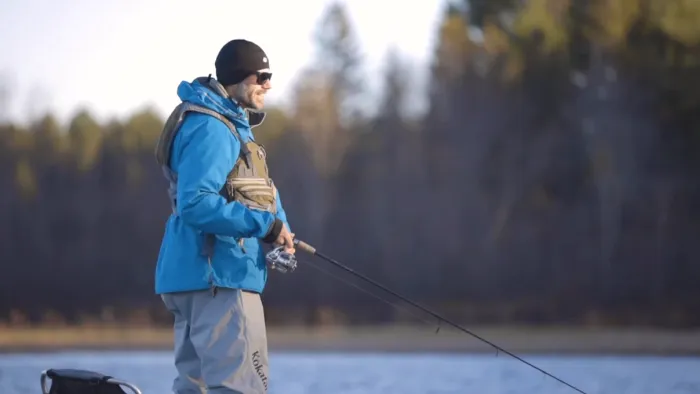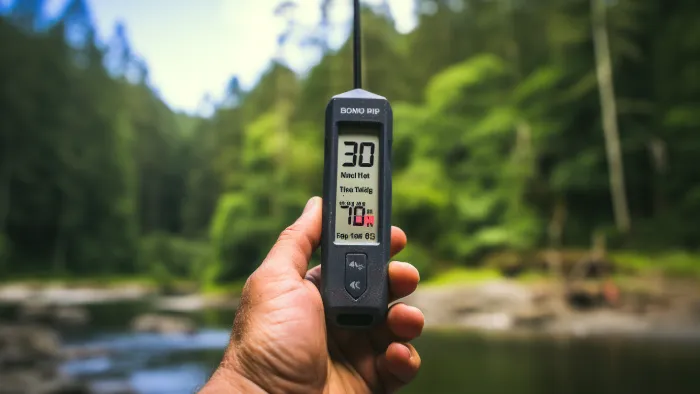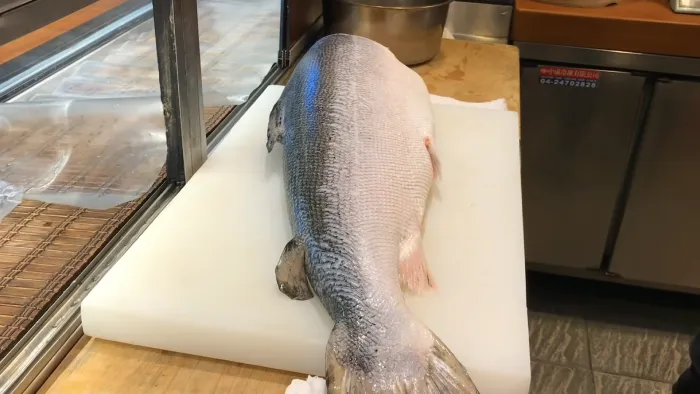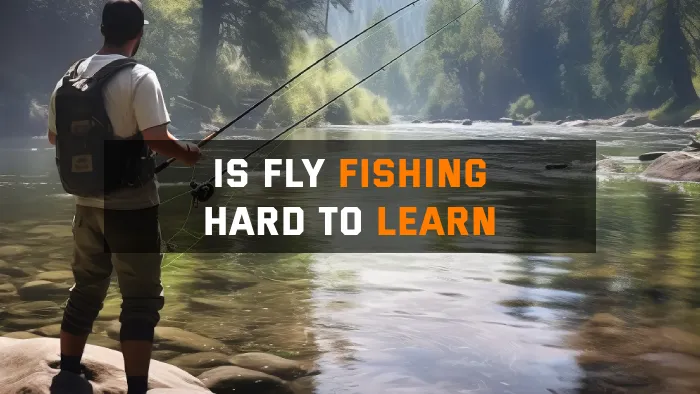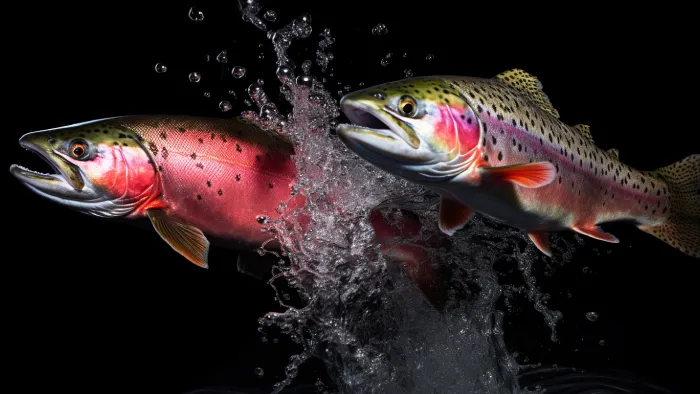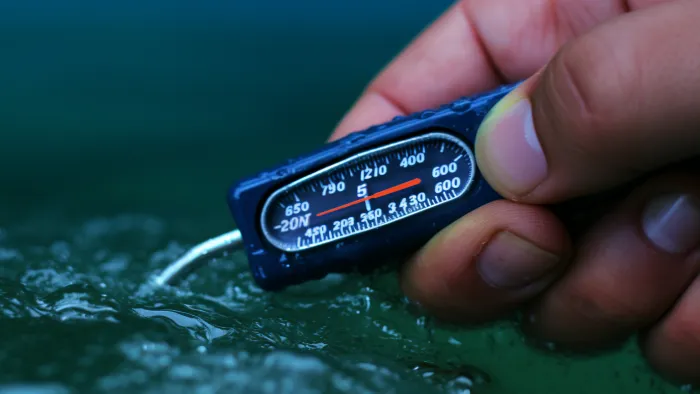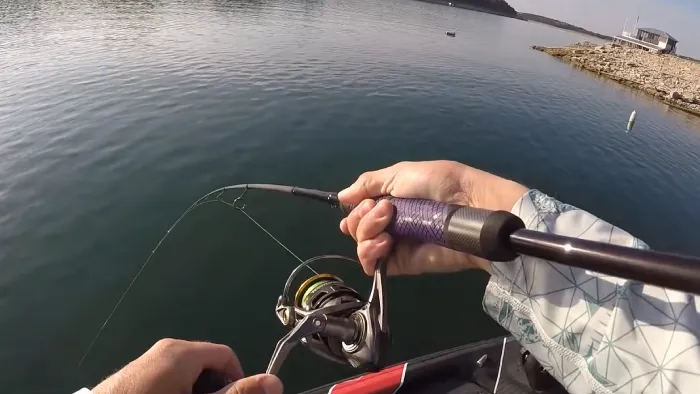How Windy Is Too Windy for Fishing | Follow Some Guidelines
Determining the optimal level of wind for a successful and safe fishing outing can be a pivotal factor in the angler’s experience. Whether fishing offshore, deep-sea, or from a kayak, windy conditions can adversely affect fishing in various settings. By the way, do you know how windy is too windy for fishing?
Wind speeds over 15-20 knots might compromise safety and productivity for bass fishing. Offshore fishing can quickly become dangerous with 20 to 25 knots winds and three-foot seas. Conversely, kayak fishing suggests keeping wind speeds below 15 mph to maintain control and navigation ease.
Here, we will explore the effects of wind on your fishing experience, weighing the pros and cons and providing safety tips for those blustery days.
How Windy Is Too Windy for Fishing: Follow These Guidelines

When fishing in windy conditions, there are several key points to consider. Here are some hints for fishing in windy conditions:
- Choose the right spot
- Check wind direction
- Use heavier weights
- Adjust casting techniques
- Choose the right lures
- Tighten your line
- Stay mobile
- Use wind as an advantage
- Patience and persistence
Let’s look at each of these points in more detail:
No 01: Choose the Right Spot
To find the ideal fishing spot, consider areas with natural windbreaks like coves or points. These locations can provide much-needed shelter from the wind, making your fishing experience more enjoyable.
When the wind is too strong, it can make casting difficult and cause your line to tangle. Choosing a spot with natural windbreaks can minimize these challenges and increase your chances of a successful catch.
Coves, in particular, can offer excellent protection from strong winds as they are often surrounded by land, creating a natural barrier. Points, on the other hand, can help break up the wind and create calmer waters.
No 02: Check Wind Direction
Make sure you assess the direction of the wind before you start fishing. This step is essential as it directly affects the drift of your bait or lures.
Position yourself in a way that the wind blows towards the area you intend to fish. Doing so allows your bait to move naturally, simulating a more realistic presentation and increasing your chances of attracting fish.
When the wind is blowing in the same direction as the area you are targeting, it creates a favorable scenario. The wind carries your bait or lures toward the fish, making it easier for them to detect and strike.
On the other hand, fishing against the wind can make it challenging to control the movement of your bait and reduce its effectiveness. Therefore, always consider wind direction to optimize your fishing experience.
No 03: Use Heavier Weights
When the wind picks up, it creates a force that pulls on your line, causing it to bow and making it difficult to keep your bait where you want it. By using heavier weights, you can increase the overall weight of your setup and make it more resistant to the wind’s force. This will help submerge your bait and prevent it from drifting off course.
Using too heavy weights can make it difficult to detect bites and affect your setup’s overall sensitivity, so finding the right balance is crucial. Experiment with different weights to find the optimal balance for your fishing conditions.
No 04: Adjust Casting Techniques
Adjusting your casting technique in windy conditions can greatly improve your fishing experience and increase your chances of success.
One way to do this is by aiming into the wind and casting lower to the water’s surface. When the wind is strong, it can significantly affect your cast. Aiming into the wind can counteract its force and ensure that your bait lands where you want it to.
Casting lower to the water’s surface also helps minimize the impact of the wind on your line. This technique reduces the chances of your line getting caught in the wind and tangling. It also gives you better control over the trajectory of your bait, allowing you to accurately target your desired fishing spot.
No 05: Choose the Right Lures
Choosing the right lures for windy conditions can greatly improve your chances of success. In such conditions, opting for heavier lures like jigs or crankbaits is important.
These lures have greater wind stability, allowing for more accurate casting. The added weight helps combat the effects of strong gusts, enabling you to maintain control over your lure.
Conversely, surface lures may prove difficult to handle in windy conditions due to their lighter weight and susceptibility to being blown off course. Instead, consider using subsurface lures that stay beneath the water’s surface. These lures offer better control and are less affected by the wind.
No 06: Tighten Your Line

Keep your fishing line taut to improve sensitivity and prevent missed bites. When your line is tight, you increase your ability to feel even the slightest movement. This is crucial for detecting subtle strikes and ensuring a successful catch.
Maintaining tension on your line also helps minimize slack, which can harm your fishing experience. Excessive slack reduces sensitivity and increases the likelihood of missed bites. Keeping your line taut keeps you connected to your bait and can react quickly to any activity.
This is especially important in windy conditions when the wind can cause your line to become loose.
No 07: Stay Mobile
To adapt to changing conditions effectively, you’ll want to stay mobile and be prepared to move around if the wind shifts or changes intensity. This is crucial in fishing, as it allows you to maintain a favorable casting angle and ensure that your bait is still effectively presented.
By staying mobile, you can actively respond to the wind’s movements and adjust your position accordingly. This will increase your chances of success by keeping your bait in the target area and increasing the likelihood of attracting fish.
Additionally, staying mobile allows you to explore different areas and find the spots where fish are more likely to feed. So, don’t hesitate to move around and adapt to the changing wind conditions for a successful fishing experience.
No 08: Use Wind as an Advantage
Position yourself where you can capitalize on the natural movement of food sources, as the wind can work in your favor by pushing baitfish and other prey closer to the shore.
The movement of wind creates a current in the water, pushing baitfish towards the shore. Smart and opportunistic, Predatory fish take advantage of this situation by strategically positioning themselves to ambush their prey.
As an angler, you can do the same. By understanding how wind affects the movement of baitfish, you can position yourself in areas where the wind is pushing the prey closer to the shore. This increases your chances of catching fish, as they will be concentrated in these areas.
No 09: Patience and Persistence
Be patient and persistent as you experiment with different techniques and adjust your strategy while remembering that fish still need to eat, even in challenging conditions.
Windy conditions can make fishing more challenging, but with the right approach, you can still succeed. For fishing in windy conditions, it is important to understand the behavior of the fish.
Strong winds can disrupt the water surface, causing fish to seek shelter or move to calmer areas. This means that you may need to adjust your fishing spot or target different areas of the water.
Additionally, the wind can create a natural drift that can be used to your advantage by casting your bait or lure in the direction of the drift. By being patient and persistent and adapting to the conditions, you can still catch fish even on windy days.
Fishing in Windy Conditions: Pros and Cons
Fishing in windy conditions can enhance the angling experience by providing a challenge and improving an angler’s skills and problem-solving abilities. The pros of fishing in windy conditions include:
- Concealment of the angler’s presence: The ripples and disturbances created by the wind can make fish less cautious.
- Stimulation of fish activity: Wind-induced waves stir up the water and dislodge food sources, increasing fish activity.
- Pushing baitfish closer to the shore: Wind can push baitfish closer to the shore, making it easier for predatory fish to find a meal.
- Covering noise and movement: Windy conditions provide cover for anglers, allowing for less stealthy approaches.
However, there are cons to fishing in windy conditions, such as:
- Casting challenges: Wind can make casting more difficult and less accurate.
- Reduced sensitivity: Detecting bites and strikes can be difficult when the wind blows.
- Risk of snags: Wind can increase the chances of getting snagged on debris or vegetation.
- Safety concerns: Fishing in strong winds can be dangerous, especially in small boats.
- Limited lure options: Windy conditions may limit the effectiveness of certain lures.
- Inconsistent results: Windy conditions can make fishing unpredictable, leading to inconsistent results.
- Physical discomfort: The discomfort caused by strong winds, such as windchill or being constantly buffeted, can detract from the fishing experience.
While fishing in windy conditions can have advantages, you should consider the drawbacks and make informed decisions based on safety and fishing success.
Safety Tips for Fishing in High Winds
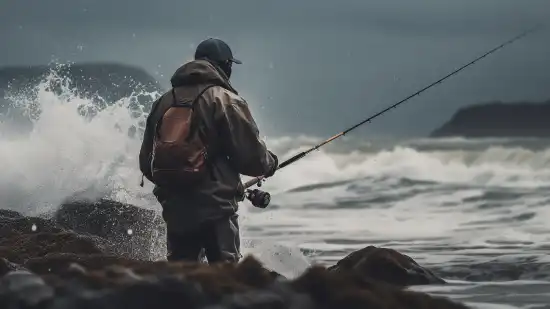
When fishing in high winds, it is crucial to prioritize safety. Here are some important tips to help ensure your well-being.
- First, check the weather forecast before heading out and consider postponing your trip if strong winds are predicted.
- Dress appropriately with layers and wear a windproof and waterproof outer layer.
- Always wear a properly fitting life jacket if fishing from a boat or kayak.
- Secure all your gear and personal items to prevent loss or damage.
- Choose fishing spots that provide natural windbreaks, such as coves or docks.
- Maintain balance on uneven surfaces and be cautious on boats or kayaks, gripping your equipment firmly.
- Avoid fishing alone and know the escape routes or safe areas for seeking shelter.
- Stay informed about changing weather conditions and stay hydrated throughout your trip.
- Lastly, use sturdy anchors to keep your boat stable in high winds.
Are fish more likely to bite in calm or windy weather?
Anglers often debate whether fish are more active and likely to bite during calm or windy weather. Despite the lack of a definitive answer, scientific research has provided some insights into this topic.
In calm weather, fish tend to be more cautious and rely on their vision to detect potential threats. They may be more hesitant to bite, especially if the water is clear and the fishing line is visible.
On the other hand, windy weather can create more movement in the water, which can stimulate fish to feed. The wind can also create ripples on the surface, which can help to camouflage the fishing line and make it less noticeable to the fish.
Additionally, windy conditions can oxygenate the water, making it more comfortable for fish and increasing their activity levels.
Ultimately, the impact of weather on fish behavior and feeding patterns can vary depending on the species, location, and other environmental factors.
Is 14 mph too windy for fishing?
At 14 mph, it might be challenging to maintain stability while casting your line. Wind speed plays a crucial role in fishing, as it affects the behavior of fish and the angler’s ability to control their equipment.
When the wind speed reaches 14 mph, it can create significant disturbances on the water’s surface, causing ripples and waves. These conditions can make it difficult for fish to detect and track bait, resulting in decreased feeding activity.
Additionally, the wind can make it harder for anglers to accurately cast their lines and maintain control over their fishing gear. Therefore, fishing in 14 mph winds may not be ideal, as it can reduce the chances of successful catches and make the overall experience more challenging.
Fishing in Windy Conditions: Challenges and Opportunities Revealed
Fishing in windy conditions can be both challenging and rewarding. While it may require adjustments in technique and equipment, it can offer unique opportunities to catch more fish.
As highlighted by the considerations for bass fishing, offshore expeditions, and kayak fishing, it’s evident that a threshold exists beyond which wind speed can compromise both productivity and safety.
Whether it’s the 15-20 knots for bass fishing, the three-foot seas and 20-25 knots for offshore fishing, or the 15 mph limit for kayak fishing, recognizing these thresholds becomes essential.
Ultimately, making informed decisions about when it’s too windy for fishing can lead to enjoyable and rewarding experiences while prioritizing the well-being of anglers.
However, it is important to prioritize safety and always check the weather conditions before heading out. Fishing in high winds can be dangerous, so following safety tips and guidelines is crucial.

